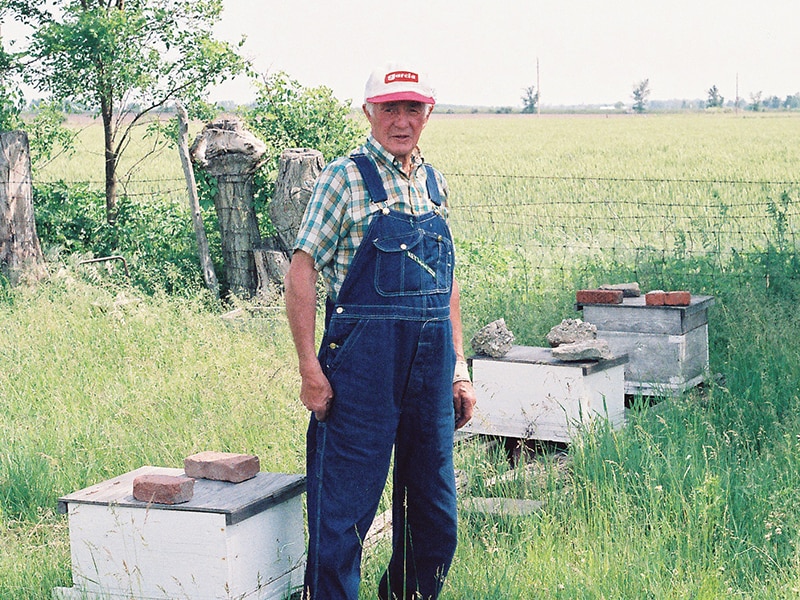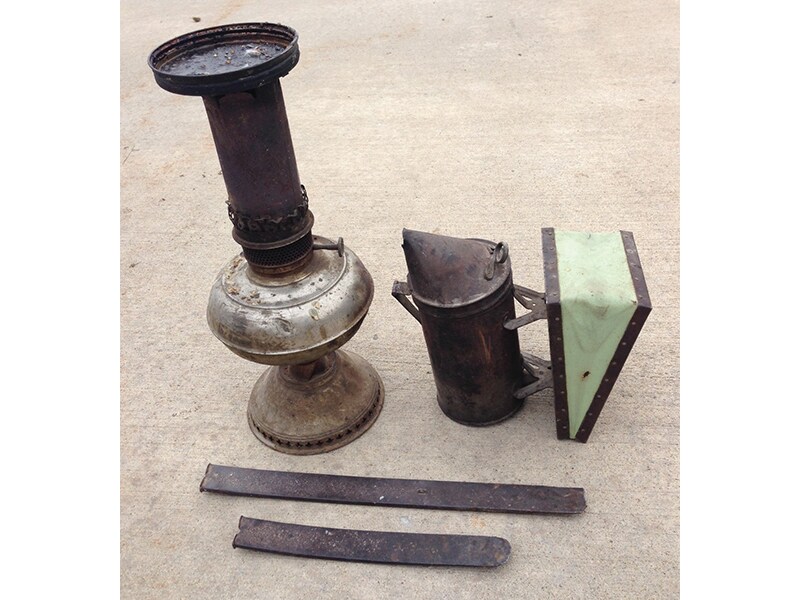Dad was a Beekeeper

Sometimes it’s the little things that stick in your mind; Dad was a beekeeper. It wasn’t a major part of his life, just a hobby really. The most colonies I ever remember him having was 25. But the bees were always there, while I was growing up, and the images and inner workings are still keen in my mind.
Beekeeping is very process oriented; you have to take care of bees year-round, add supers during the honey production cycles, harvest the surplus honey at the right time, clean it up and then sell it. Serious beekeeping is a much bigger job than most folks would imagine.
A bee colony has two missions – to make honey (as food for the colony) and to make more bees. In the late spring, if bee production has been good, the queen bee and half or so of the workers leave the hive to start a new colony. Upon departing, they gather on some nearby object – often a tree limb, and wait for the scouts to return and lead them to their new home. One of the jobs my brother Jerry and I got paid for was capturing the escaping swarms by puffing smoke on them (to calm them down), then cutting off the limb and laying the swarm in front of a newly prepared bee hive. The bees moved right in; Dad got a new swarm and Jerry and I split 50 cents for our efforts.

Periodically dad would check the progress of the honey production; then early summer and late fall he would harvest the honey, by removing most of the honey-laden supers from the hive bodies.
Preparing the honey for market was next. Comb honey boxes were inspected, scraped of extra beeswax, and boxed. For liquid honey, the wax caps of the honey cells were sliced off; then the honey was spun out using a large crank-type centrifuge, in the well-heated old brooder house. Finally the honey had to be screened, bottled and labeled.
After all that, the honey was ready to be sold – to neighbors or the local grocery stores. At first I went along with dad, but as a teenager, I made a few sales calls on my own. Dad’s beekeeping activities were a small thing, in the big picture of life, but the hard work and attention to detail made a lasting impression on me.

